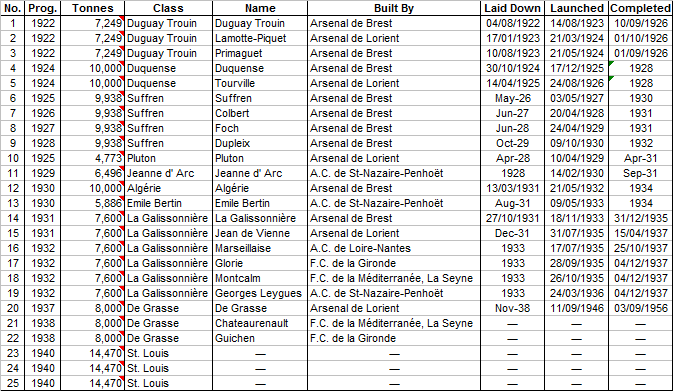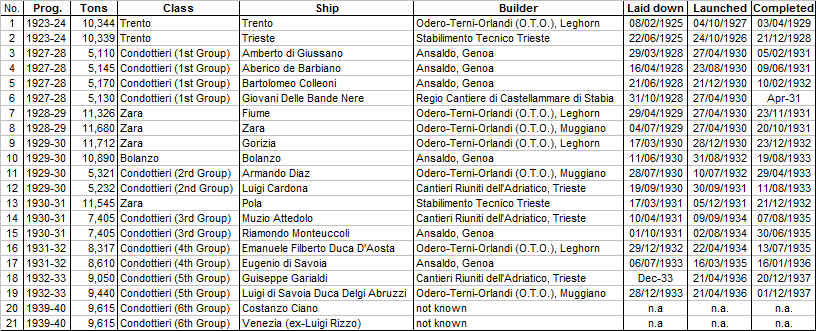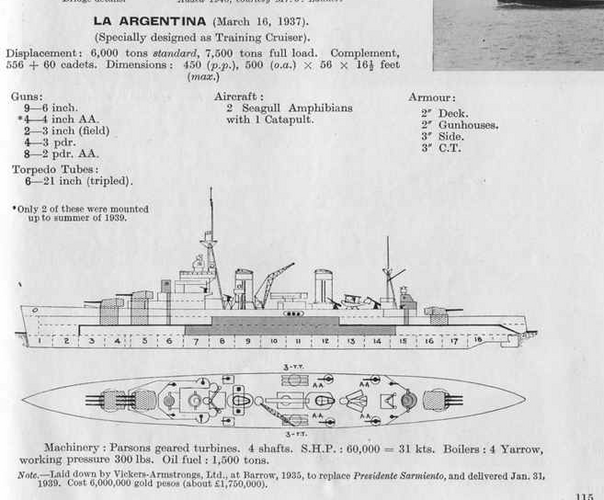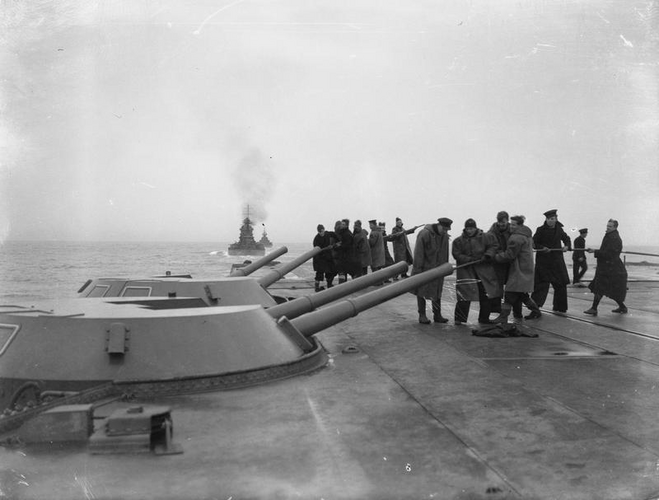I've already written that I think they'd continue to build Edinburgh class instead of the Colony class and its successors if there was no 2nd LNT or a less restrictive Treaty retained the 10,000 ton limit for Cruisers in the previous Treaties. Now I think that they'd also build another 16 Amphion class Cruisers of 7,000 tons instead of the 16 Dido class.
The only thing against the Amphions is that the Admiralty viewed them with distaste because they had been conceived as a sop to Geneva in an attempt to encourage other navies they didn't need to build up to the 10,000 ton limit but everyone else just laughed and built 10,000 tonners (usually actually way over that with cheating). Therefore the Edinburghs were ironically the outcome of that - to fully build up to the limit with fewer constraints. So that would tend to cloud their judgement that a 6in cruiser should be 10,000 tons to match the Joneses. In any case with the triple turret its just as easy to build a 3x3 6in cruiser - effectively a Colony. I'm not sure that a Amphion with improved armour would work out much cheaper in terms of displacement or cost.
My reading was that the Leanders & Amphions were the Cruisers that the Admiralty preferred because they were fit for purpose and cheap enough to be built in the numbers it wanted. As you wrote it was forced to build the Towns, Colonies & Swiftsures to keep up with the Joneses.
Costs
These costs are from a Cabinet Paper called
"Defence Expenditure in Future Years, October 1937".
£2,400,000 Norfolk
£2,175,000 Glasgow (including aircraft £55,700)
£2,200,000 Liverpool (including aircraft £55,700)
£1,650,000 Dido
£1,400,000 Penelope (including aircraft £22,000)
£1,400,000 Aurora (including aircraft £22,000)
Unfortunately, it didn't have the costs for the Amphion, Edinburgh & Leander classes.
Notes I made from
"The Design and Construction of British Warships 1939-1945, Volume 1" by D.K. Brown say:
£2,000,000 per ship, Kent & London classes.
£1,613,000 Leander class
£1,200,000 Arethusa class
£2,150,000 Edinburgh class
£1,600,000 Dido class
£2,230,000 Fiji class
There were no costs for the other Colony classes and there weren't any for the York, Amphion, Southampton, Gloucester & Swiftsure classes either.
The costs are
"Vote 8 costs" which refers to
"Vote 8 Shipbuilding, Repairs, Maintenance, &c." of the Navy Estimates and therefore excludes the cost of their gun barrels & aircraft, which came under
"Vote 9 Armament" for the gun barrels and (until the 1938-39 Estimates)
"Vote 4 Fleet Air Arm" for the aircraft.
I also have a photocopy of Page 118 of the book that has a table of particulars of Cruiser designs from the Kent to Dido classes. At the bottom of the table were the Vote 8 costs. Unfortunately, it only had costs for the following classes.
£2,084,200 Kent class
£1,966,350 London class
£1,613,220 Leander class
£1,193,000 Arethusa class
£1,835,129 Southampton class
£2,151,220 Belfast class
£1,574,450 Dido class
My copy of Jane's 1939 has the following costs:
£1,970,000 Kent class (average cost of) and cost of armament £700,000.
£1,480,097 Ajax
£1,500,000 Leander - Average cost of class - Cost £1.5M to £1.6m apiece.
£1,422,727 Perth
£1,434,579 Sydney
£1,251,161 Arethusa
£1,210,763 Galatea
£1,290,787 Penelope
£1,252,915 Aurora
It didn't specifically say so, but due to their similarity to the costs in, D.K Brown's book, I think they were Vote 8 costs.
Although neither the Cabinet Paper, Jane's 1939 or D.K. Brown had a cost for the York class, Douglas Morris in his entry on the class in
"Cruisers of the Royal and Commonwealth Navies" (Pages 187 & 188) says that the class hardly succeeded as economical alternatives to the 10,000 ton Counties as the one-eighth reduction in cost wasn't significant enough.
On that basis the costs of Exeter & York would have been:
£2,100,000 Total Cost ((£2,400,000 Norfolk in the Cabinet Paper ÷ 8) x 7 = £2,100,000))
£1,750,000 Vote 8 Cost (Circa £2,000,000 a County in Brown & Janes ÷ 8) x 7 = £1,750,000))
Based on the above I think an Amphion would cost about the same to build a Dido. It would also save the cost of the R&D to develop the 5.25in gun & its twin turret (because all the new Capital Ships were armed with 4.5in guns) and put them into production. As the twin turret on the Amphion used the same mark of 6in gun as the one in the triple turrets on the larger cruisers there's some potential for some production economies of scale for the guns & ammunition.
My guess is the Medium Size Cruiser armed with nine 6in guns in three triple turrets that you suggest would come out at around 7,000 tons like the Amphion with the same machinery and armour on the same scale so the same Vote 8 cost. Plus as it would have the nine 6in guns instead of eight with the same secondary & light AA armaments, nearly the same Vote 9 cost. It would also reduce the demand for gun pits of cruiser turret size as there would be three per ship instead of four and for all I know three triple turrets may be cheaper to build than four twin turrets.
According to the above the Vote 8 cost of an Amphon was about £1,450,000 and the cost of a Fiji was £2,230,000 so the latter cost 54% more than a Fiji but I suspect that the cost of the latter was distorted by wartime inflation. Therefore, if we use the cost of the Dido class instead that's £1,600,000 versus £2,230,000 and a difference of 39% which is still a significant difference. The standard displacements were 7,000 tons & 8,500 tons with a difference of 1,500 tons or 20% which is a significant.
However, in any case I'm talking about building a mix of Edinburghs and Amphions instead of the
"Real World's" mix of Colonies and Didos. Here the difference in size and cost is significant. Vote 8 cost is £1,450,000 versus £2,150,000 producing a difference of 48% and 7,000 tons versus 10,000 tons producing a difference of 43%.




